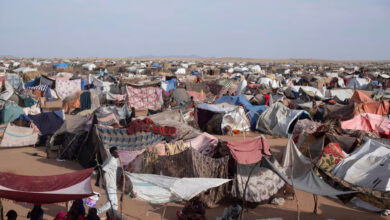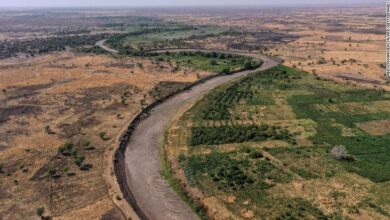Sudanese Ambassador in Cairo Abdel Rahman Ser al-Khetm on Tuesday said Egypt and Sudan will announce a solution to their border dispute in June.
The Halayeb triangle border area has been an issue of contention since the late 19th century.
In 1899, when Britain occupied Egypt and Sudan, the Anglo-Egyptian Condominium Agreement for Sudan set the political boundary between the territories at the 22nd parallel, placing the Halayeb triangle inside Egyptian borders.
In 1902, the British drew a separate "administrative boundary" that placed the Halayeb triangle under Sudanese administration because its inhabitants were closer to Khartoum than Cairo.
The Halayeb triangle, which includes the three main towns of Halayeb, Abu Ramad and Shalatin, stretches over 21,000 square kilometers.
The area remained under Egyptian-Sudanese joint control until the dispute resurfaced in 1992, when Sudan allowed a Canadian oil company to search for petrol in the waters off Halayeb. Negotiations began, but the company pulled out of the deal until sovereignty was settled.
In 2004, Sudanese President Omar al-Bashir claimed that despite his nation's withdrawal in 2000, the area still rightfully belonged to Sudan and the country submitted a memorandum in this regard to the UN.
In statements reported by several Egyptian media outlets, Ambassador Ser al-Khetm said senior technical committees from both countries will meet on 26 May in Khartoum to transform Halayeb into a pioneering model for an economic integration of Egypt and Sudan.
He added that the foreign ministers of both countries will meet at the beginning of June to endorse this model.
In a ceremony held on Tuesday in Aswan, the Sudanese ambassador said his country is giving Egypt a gift of 5000 calves and 60,000 tons of sesame.
Mostafa Othman Ismail, an adviser to the Sudanese president, had in October 2009 said his country had a proposal for integration of border towns to solve border disputes between Egypt and Sudan.



